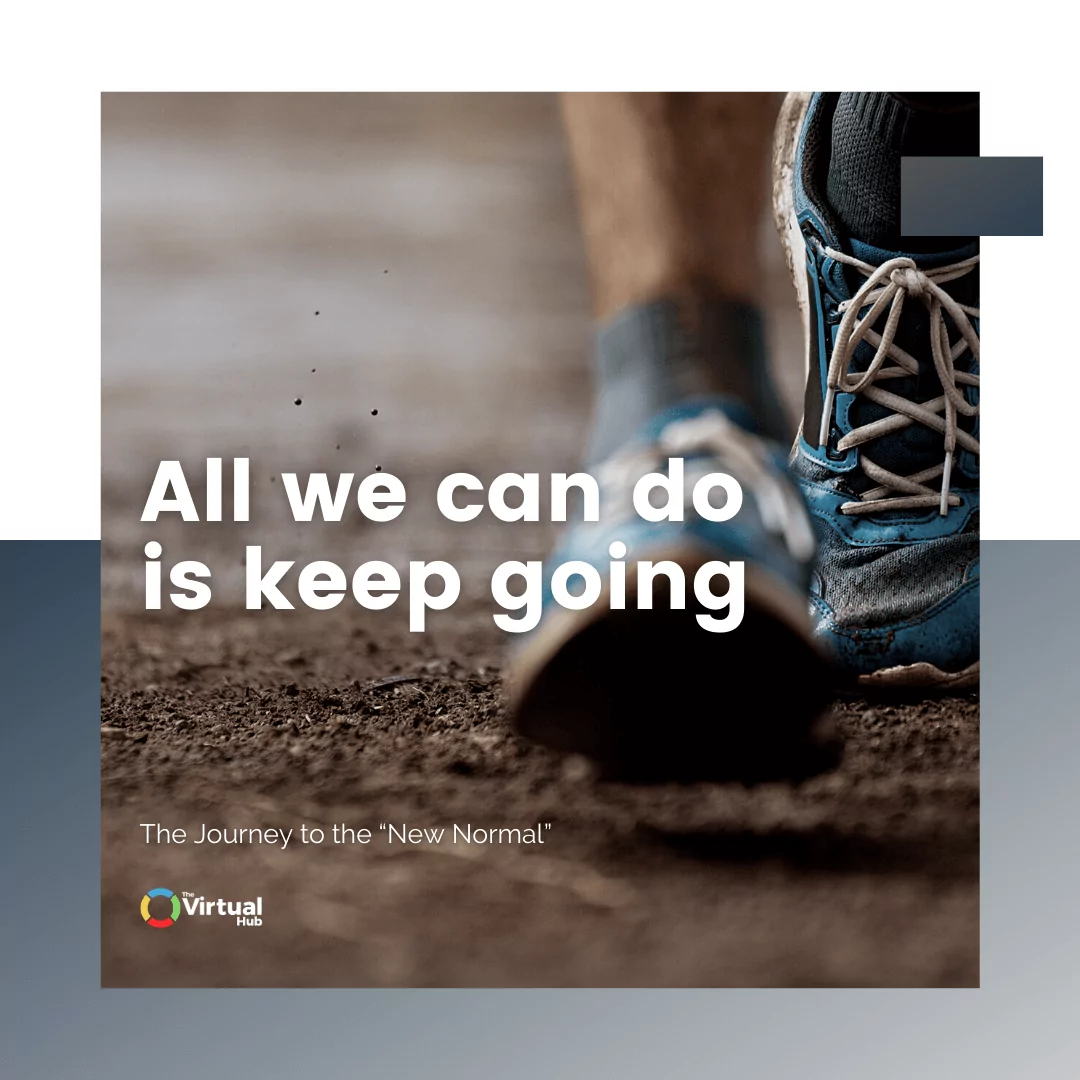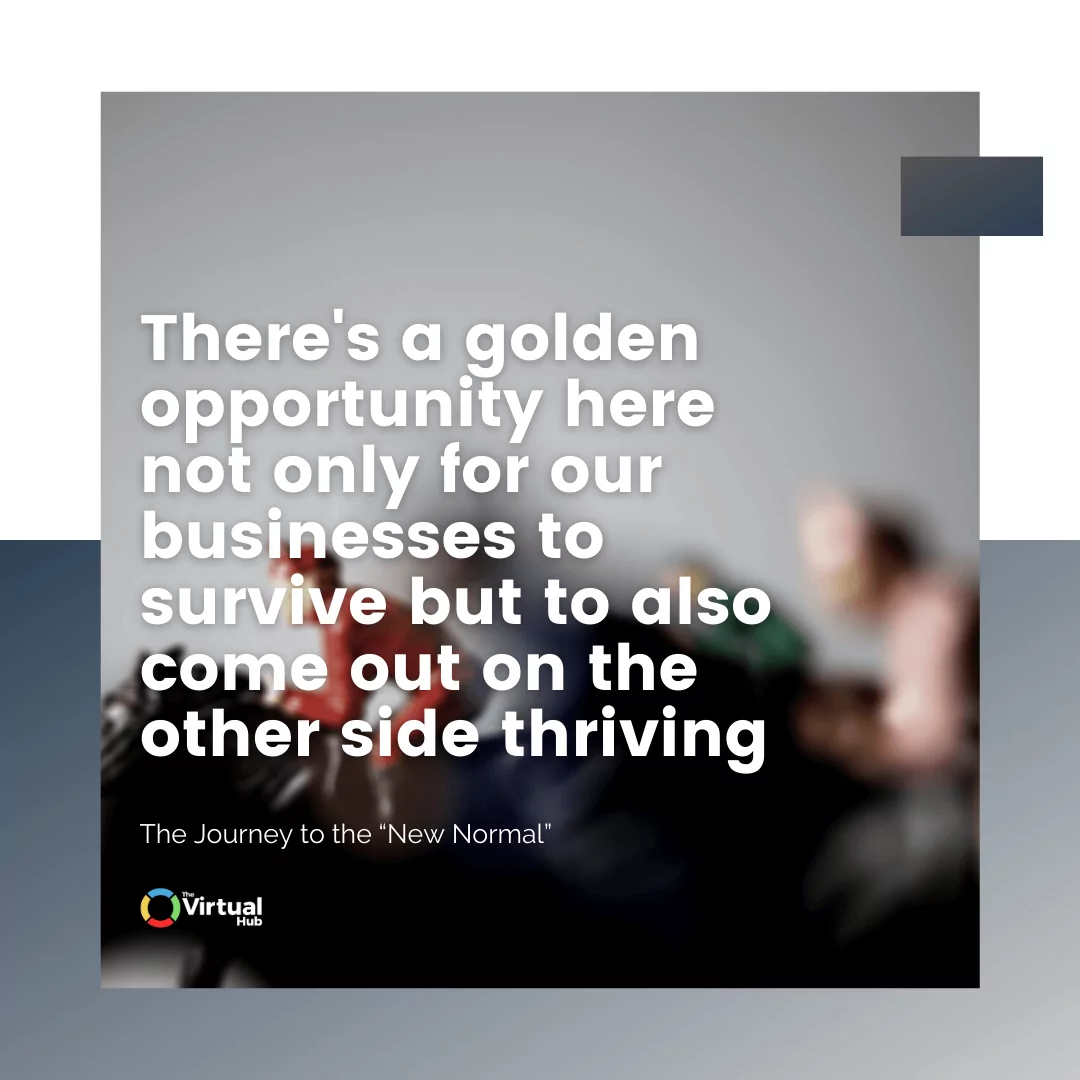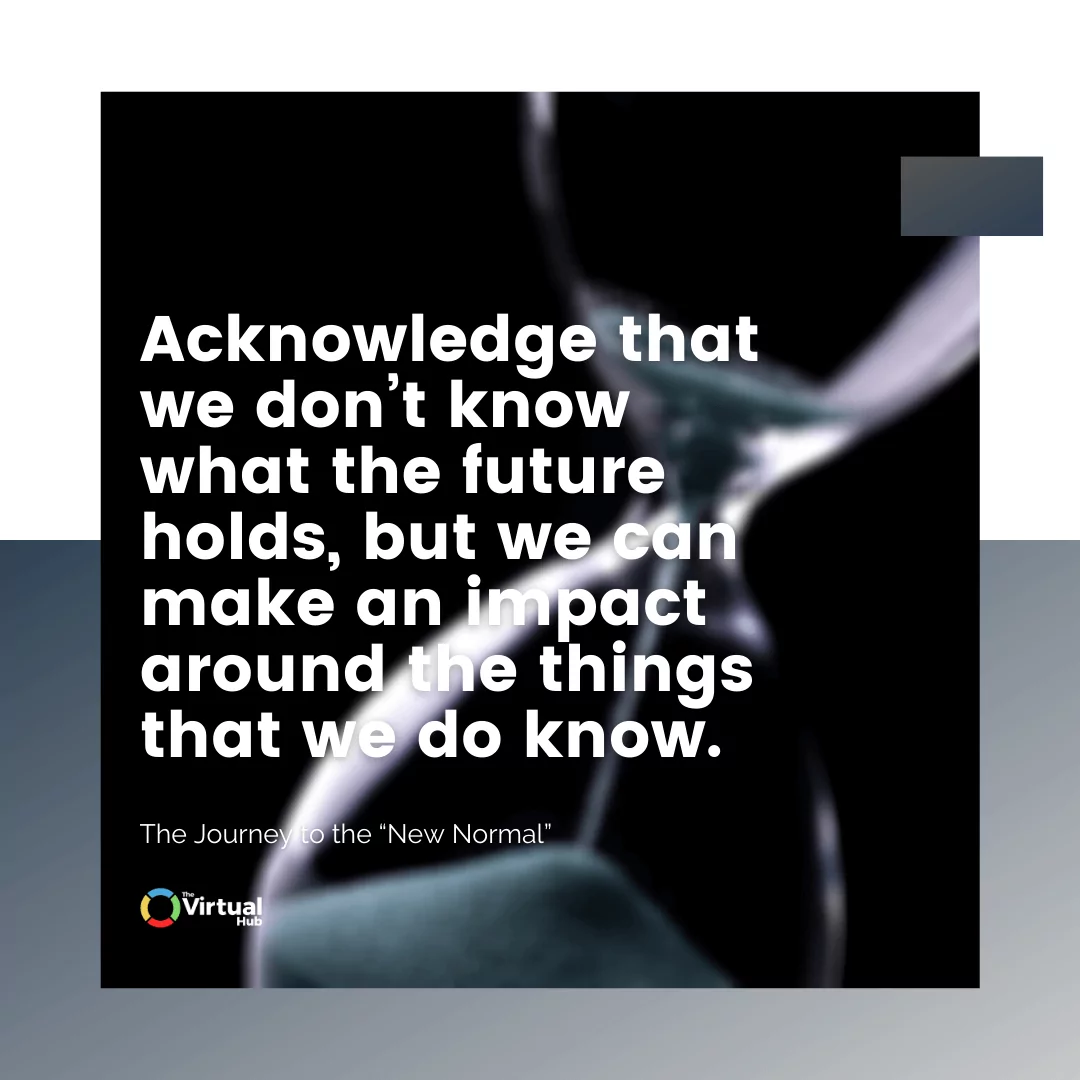Authored by: Barbara Turley, CEO - The Virtual Hub
In my last entry, I talked about The Virtual Hub’s recruiting challenges that have cropped up because COVID-19 has shut many businesses down and so many are out of work. I also alluded to how we, as business owners, currently have a dual purpose:
- Deal with “right now.”
- Plan for what’s to come – which is going to be the “real” crisis.
First, we have new obstacle after new obstacle arise as we move through the global crisis, not to mention the “resilience fatigue” that comes with addressing unfamiliar problems week after week after week.
Back in March, we thought this was going to be one, big – and temporary – shift in how we do business. Six months later, we have differing levels of lockdowns and restrictions across the globe, little has gone back to any semblance of “normal,” and we’re flying by the seat of our pants as the pandemic drives an ongoing series of shifts over the long-term.
I don’t know about you, but my rate of self-care coping activities (e.g., standing in a long shower) must be up 75-100% over 2019. It’s exhausting to keep up, and there’s no end in sight to this middle ground we’re in between the old and new normals.
Yet all we can do is keep going. On top of the day-to-day, we have to plan ahead to ensure our businesses survive the upcoming crisis of the worldwide economic fallout that’s expected. I believe that, if we’re smart, there’s opportunity here to not only for our businesses to survive, but to also come out on the other side as thriving businesses. But it’s not going to happen by itself.

Which is why you’re going to have to throw yourself into bootcamp to build some muscle for the ongoing journey into the unknown new normal.

Entering Bootcamp
You probably know that the word “bootcamp” comes from the military to describe the initial, intensive training period for new recruits.
Recently, it’s been co-opted by other types of short-term, immersive training programs, including those for business skill-building and fitness kickstarts. I’ve grabbed on to this word to describe what we need to do to prepare because it must be elite, accelerated, and regimented.
This is no time to put your head in the sand and wait to see what happens. And it’s going to be a bit grueling and it’s not for the faint of heart, but it’s better to recognize that now than to be caught off guard later. (Hint: You’ve got this. If you were someone who gave up easily, you wouldn’t be a business owner in the first place!)

Start Making Plans
The intensity has ratcheted down over the last six months, but people continue to catastrophize about the short- and long-term impact of the COVID pandemic.
Many leaders at every level are talking about various scenarios that could play out. But dreaming up different possible outcomes leaves us with too many potentialities and doesn’t help us figure out how to plan ahead.
Others aren’t trying to foresee what’s coming. They’re taking a “wait and see” approach and putting off decision making until some time in the future when we “know” what’s going to happen, as if the world is suddenly going to stabilize in a way that makes everything crystal clear.
We can’t come up with contingency plans for every possible outcome, and we can’t wait and see, or we’ll be caught unprepared and behind the competition.
So, what can we do?
First of all, acknowledge that we don’t know what we don’t know (the future), but we can make an impact around the things we do know. This means you must control what you can and remove as much ambiguity around what you’re doing as possible. In short, assess your risk and eliminate as many uncertainties as you can.

Next, realize that at some point, you have to stop thinking about all the possibilities that could happen and start placing bets on what’s likely to happen. From that point of view, we can begin to act now to ensure better outcomes later. Then, we can take a look at how economic crises have affected businesses in the past and adopt the strategies of the companies that came out of a crisis as well as - or even better! - than they went into it.

Balancing Offense And Defense
Since we’re still in the middle of the COVID-19 crisis, many seem to feel that it’s still a time to pull back, to hold off on investments, and to wait and see what happens.
It may seem like the logical thing to do – to go into defensive mode like a turtle retreating into its shell during a threat and ride it out. (Not to mention we’re all just finally coming down off the adrenaline-pumping, panic mode we were in when everything turned upside down at the beginning of the year - we’re exhausted and want a break!)
But focusing all your efforts on defensive measures, or “survival” mode, typically comes back to bite businesses in the butt later.
On the other hand, taking the opposite approach and investing in full-on offensive moves, similarly reduces the likelihood that a business will survive a market downturn, much less thrive when the crisis ends.
In fact, Harvard scholars who studied the strategies used by companies during three past recessions discovered those that balanced “defensive” and “offensive” strategies were 29-37% more likely to outperform competitors after a recession.

So, even though our instincts might tell us to cut back, now is an excellent time to make some investments in your business, your people, and your growth. Strategically investing in your business now means that you’ll be laying the groundwork to respond more rapidly than competitors when demand again rises after the recession.
Our Bootcamp
Early in 2020, I was re-reading Scaling Up: How a Few Companies Make It...and Why the Rest Don't by Verne Harnish.
Harnish’s system uses the 10 Rockefeller habits as its foundation and provides a blueprint for scaling, based on what the fastest growing companies do to fuel their growth.
This blueprint is centered on four pillars a business owner or leader must consider:
- People - finding and keeping the right ones
- Strategy - crafting a differentiated one
- Execution - driving the strategy impeccably
- Cash - building up enough to get through tough times
Mastery of those four fundamentals is what allows businesses to overcome the barriers to scaling.
I loved the book because it’s full of practical advice, case studies, and tools that are accessible and immediately useful. That is, it’s not some great-sounding philosophy about how to scale a business. It gave me ideas and practical tools I could put to work right now.

Harnish’s company also offers Scaling Up as a training program, which includes live, weekly coaching sessions and a community (e.g., forums, masterminds), on top of on-demand video training, and it had been on my bucket list of things to do later. I kept thinking: “I’ll wait until the company gets bigger before I jump in.” And then it hit me how foolish that was! Why would I work to grow the company before enrolling in a program designed to help me grow the company?
When I decided to do it, I decided to do it right, so I enrolled a couple of team members along with me. For one, as a company, we’re committed to investing in our people, so I wanted to share the opportunity to learn. Plus, in allowing the team to get involved and providing them with the opportunity to step up to help lead with the program, I “lightened my load” because I wouldn’t have to be the sole driver of the initiative!
"Consider what you can do now - striking a balance between defensive and offensive measures - to enter your bootcamp."

The Scaling Up program is driving our bootcamp at The Virtual Hub, and over the next few articles, I’ll share with you some of the lessons we’re learning in balancing culture and systems to scale the business. I think you’ll be able to relate to some of the “a-ha!” moments we’ve experienced.
In the meantime, consider what you can do now - striking a balance between defensive and offensive measures - to enter your bootcamp. Your plans might make the difference between arriving at the new normal as a struggling or a thriving company.
